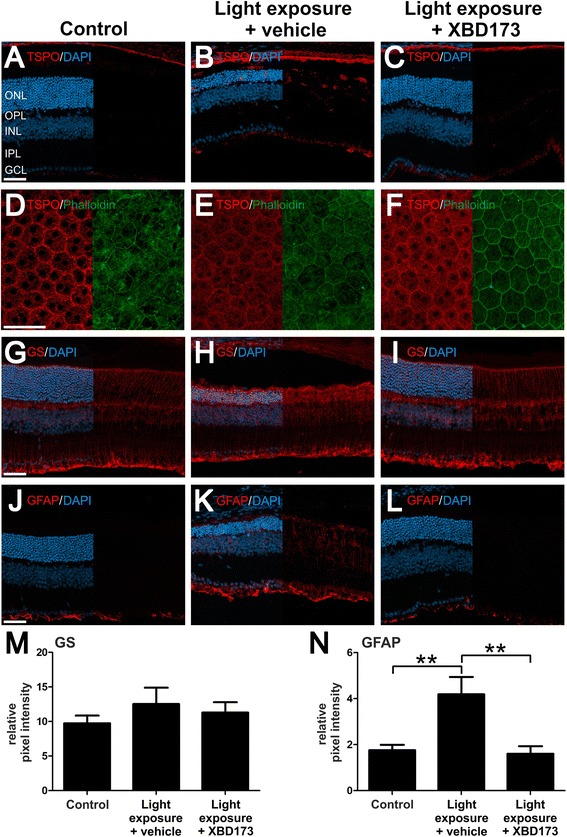Fig. 2.

XBD173 treatment of light-exposed mice down-regulates TSPO in microglia and prevents gliosis. Representative photomicrographs of retinal sections and flat mounts from mice 4 days after light exposure. Control retinas show weak TSPO labeling (a), and strong up-regulation of TSPO expression confined to microglia was present upon light exposure and vehicle treatment (b). XBD173-treated mice displayed only constitutive expression of TSPO in the RPE, but no strong signal in the retina was found (c). Number of analyzed photomicrographs: control n = 5 sections from two individual mice, light exposure and vehicle treatment n = 7 sections from five individual mice, light exposure and XBD173 treatment n = 11 sections from five individual mice. The expression of TSPO in the RPE was relatively unaffected in the different conditions as shown in flat mount images stained with anti-TSPO antibody and phalloidin (d–f). Glutamine synthetase (GS), a constitutive Müller cell protein, and glial fibrillary acidic protein (GFAP) as markers for gliosis were analyzed (g–n). GS expression did not differ in the various treatment groups (g–i, m) whereas GFAP expression was changed significantly (j–l, n). Data show mean ± SEM (control n = 5 sections from five individual mice, light exposure and vehicle treatment n = 5 sections from three individual mice, light exposure and XBD173 treatment n = 5 sections from four individual mice). **p < 0.01. ONL outer nuclear layer, OPL outer plexiform layer, INL inner nuclear layer, IPL inner plexiform layer, GCL ganglion cell layer. Scale bar 50 μm
